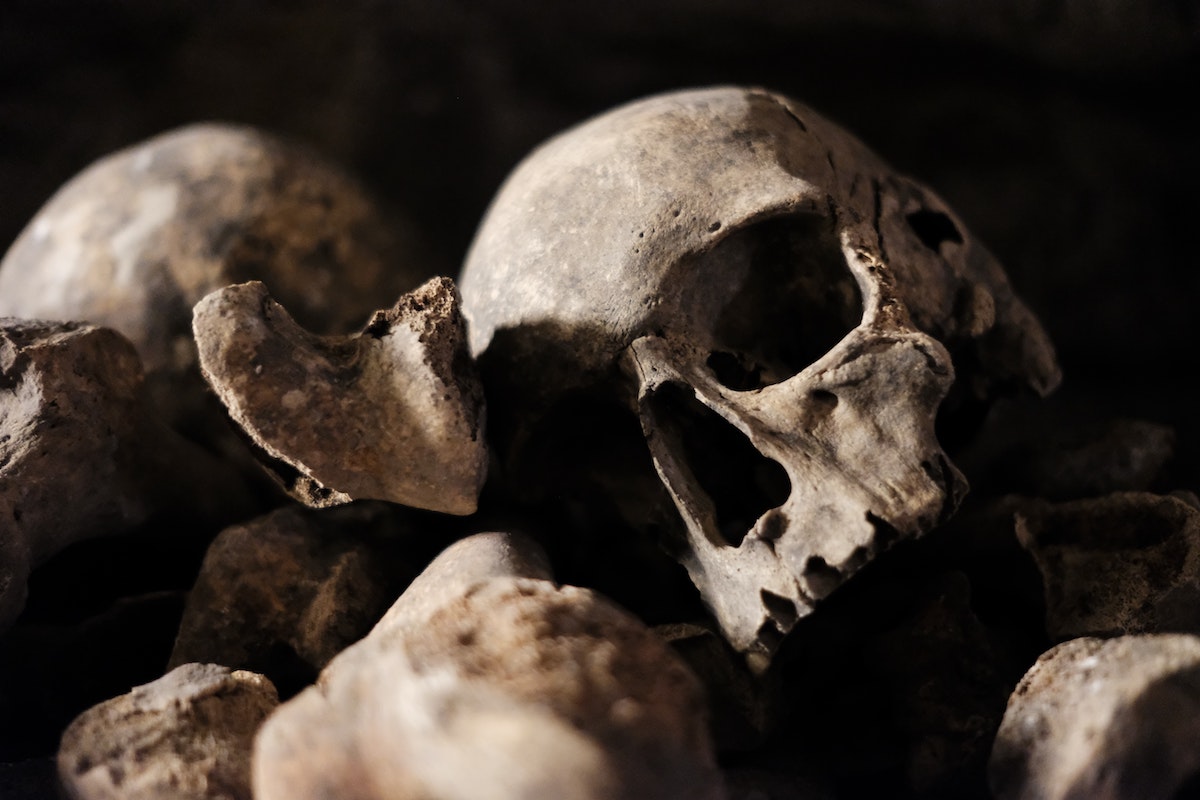By: Sarah Stone
Dark tourism is travel to places that historically have been associated with death and tragedy, such as murders or killings, natural or manmade disasters, or other misfortunes.
What Dark Tourism Is, and What It Isn’t
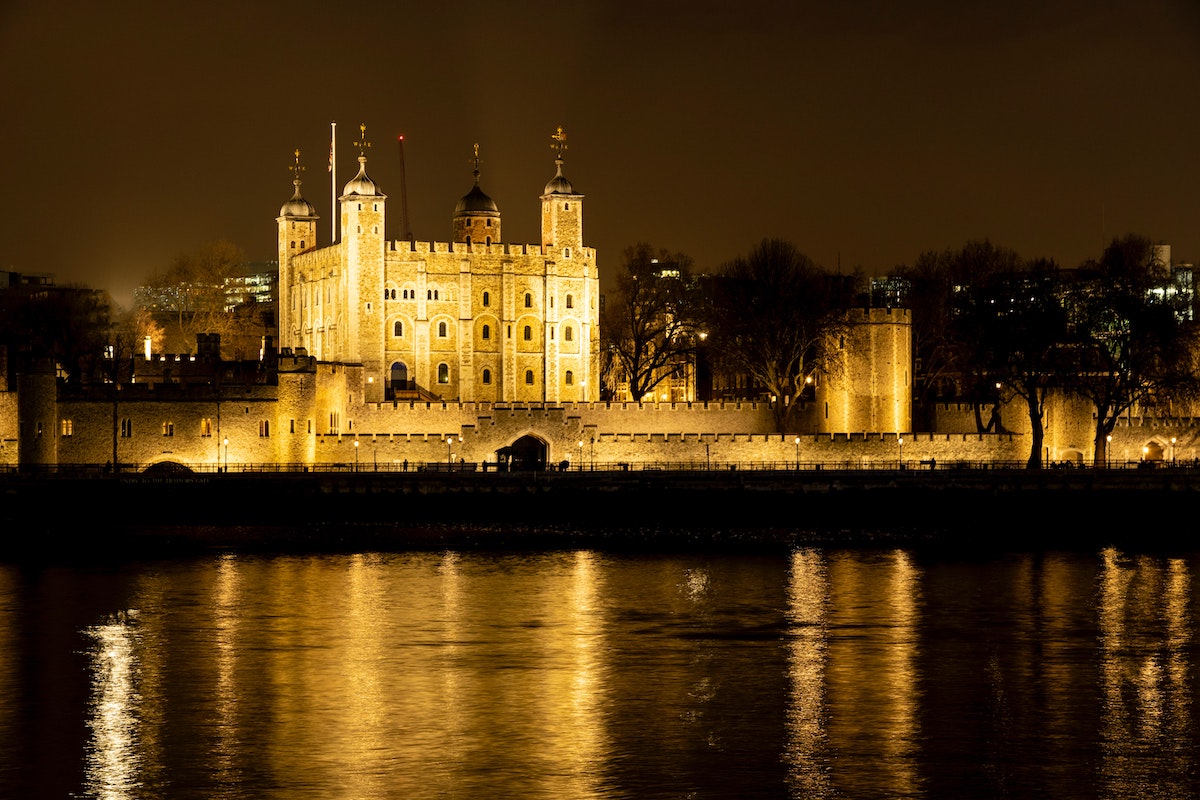
Photo by Nick Fewings on Unsplash
Dark tourism often is associated unfairly with other types of travel that can be dangerous or even unethical—let’s take a look at what dark tourism is, and what it isn’t.
Ethics of Travel
All travelers should think through the reasons behind their trips, and whether engaging in that type of activity is ethical. This goes for weekend road trips, month-long getaways, country-hopping and nomading, and everything in between. And with dark tourism—as with all other types of tourism—it’s important to consider and understand the intent behind the travel.
It’s natural to be curious about our dark history, and you can engage in dark tourism while being an ethical and respectful traveler. Some people go on these trips to learn about heritage and history, while others are drawn to strange and morbid destinations. Both of those reasons are perfectly fine.
At its most basic level, dark tourism shouldn’t be voyeuristic, and shouldn’t be undertaken in a place where a tragedy is ongoing or too recent. It’s ok to visit the Tower of London, but it’s not ok to visit the site of a recent disaster such as a hurricane or earthquake if you’re not helping (read our guide to ethical volunteer programs for a more in-depth discussion on this topic), and it’s incredibly dangerous to travel to an active war zone or a place where you and others can be actively in danger, such as a location known for cartel activity. Don’t ever put yourself or others—including the people who live there—in danger for the sake of tourism.
What is a Dark Tourism Destination?
A dark tourism destination should be equipped to handle tourists, and open to those who wish to see and understand its morbid, macabre, or tragic history.
War tourism, slum tourism, and danger tourism are NOT examples of dark tourism.
There are a lot of ways that a place can be considered a destination for dark tourism, with two main hallmarks being that the location is either where a tragic event happened, or where it’s commemorated. You could visit a historic battlefield, a heritage site, historic natural disaster sites, or even places where executions or accidents happened on a dark tourism trip. You could also visit museums that tell stories of atrocities, or that showcase stories and educate about our macabre history.
Ready to travel?
Dark Tourism Destinations
Here are just a few dark tourism destinations that we’d recommend looking into for your next trip.
Sedlec Ossuary, Kutná Hora, Czech Republic
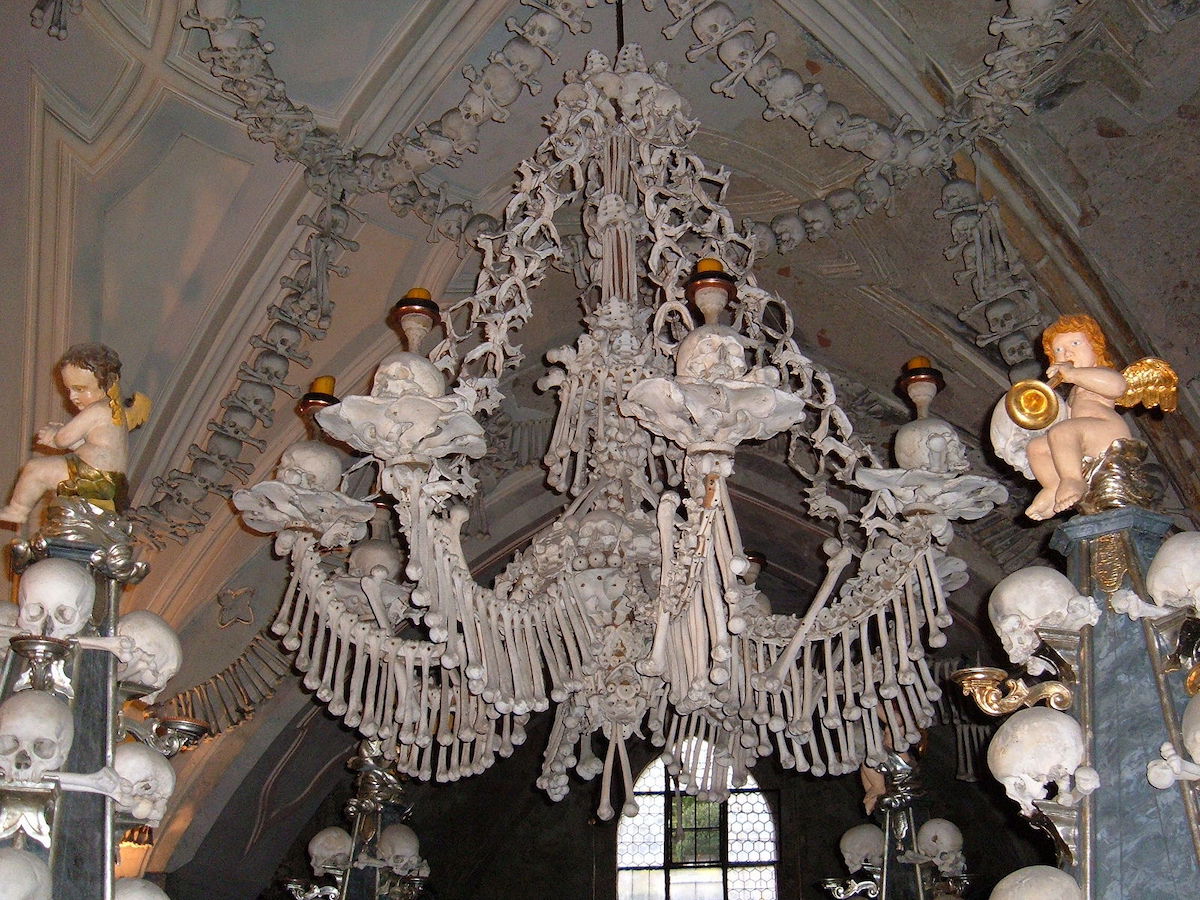
Image via BrokenSphere, Wikimedia Commons
One of the most popular tourist destinations in the Czech Republic, the Sedlec Ossuary is a chapel decorated with the skeletons of between 40,000 and 70,000 people. In the 1200s, the cemetery of the Sedlec Abbey became a popular burial site, and an ossuary—or final resting place for skeletal remains, sometimes combined with the remains of other people within one tomb, and sometimes in a single box smaller than a casket—was built to contain the bones of the many, many people who couldn’t fit within individual burial sites on the grounds. The ossuary was expanded during the Black Death of the 1300s, and in the late 1800s, the Sedlec Ossuary was renovated and decorated into the ornate chapel you can see today.
Within the Sedlec Ossuary, you can see the famous 8-foot-high chandelier constructed of every single bone in the human body. You’ll also see garlands, sunbursts, chalices, candelabras, pyramids, a family crest, and even the signature of František Rint—the woodcarver and artist who decorated the chapel in 1870—all made of bone.
Learn more about the Sedlec Ossuary and plan your visit.
Mütter Museum, Philadelphia, PA, USA

Image via Pixabay
Home to more than 20,000 anatomical models, skeletal and wet specimens, medical equipment, and much more, the Mütter Museum is a fascinating place if you have an interest in medical history and the intricacies of the human body.
Some of the museum’s exhibitions have explored infectious diseases through the ages, how human development happens, how the human body decays, and other subjects. It has also featured works from artists interpreting the documentation and display of medical specimens, and the collaborations between medical professionals and artists to create anatomical models and other educational materials.
A few things that you can see in the museum’s collections include:
- Historical medical photographs, such as Civil War injuries and amputations
- Medical instruments used for bloodletting
- Harry Eastlack’s skeleton, which is among the only known ones depicting fibrodysplasia ossificans progressiva (Mr. Eastlack donated his skeleton to the museum upon his death)
- A book bound with human skin
- Cross sections of Albert Einstein’s brain
Learn more about the Mütter Museum and plan your visit.
Listen to the Mütter Museum podcast, My Favorite Malady.
The Buried Village of Te Wairoa, Rotorua, New Zealand
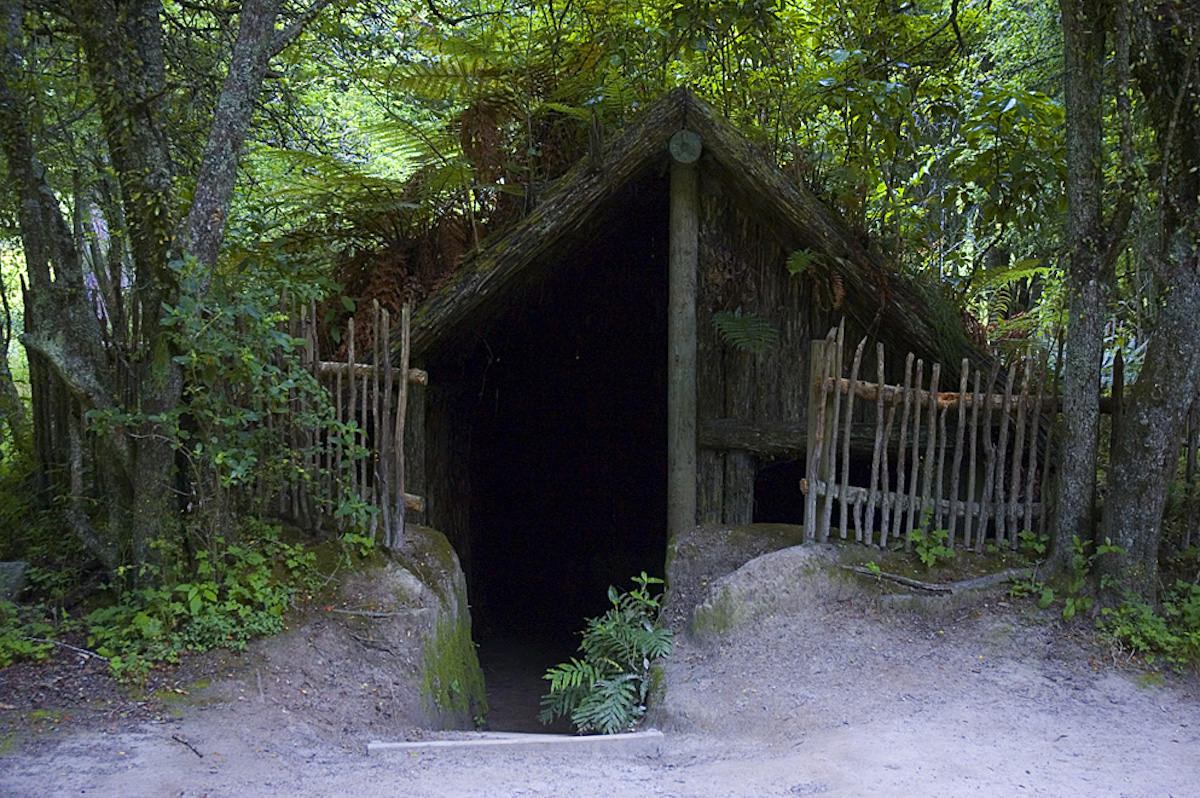
Image via James Shook, Wikimedia Commons
Located near Rotorua on New Zealand’s North Island, the village of Te Wairoa was destroyed after the eruption of Mount Tarawera, and subsequent explosion of Lake Rotomahana, in 1886—the worst natural disaster in New Zealand’s recorded history. Now a ghost town, 120 people died in the blast and the entire village was buried. The area has since been excavated, and in 1999 a museum opened to preserve relics from the village and to teach about volcanology and other fascinating subjects.
You can visit the Te Wairoa archaeological site, which spans 12 acres and has been reconstructed at its original level (so that you can see just how deeply it was buried) using materials native to the area. There are also waterfalls and hiking trails, and an interactive discovery experience, where you can hear stories about how New Zealand families lived in the 1860s.
Learn more about the Buried Village of Te Wairoa and plan your visit.
Robben Island, Cape Town, South Africa
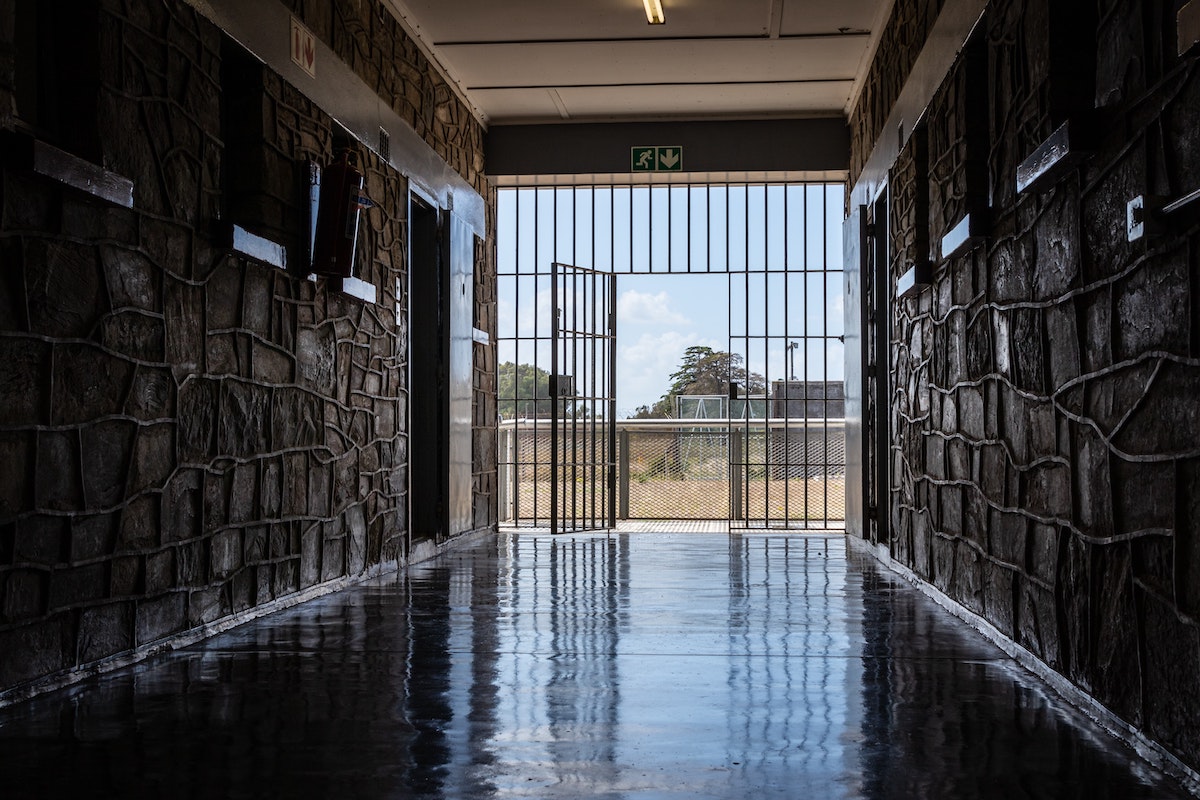
Photo by Grant Durr on Unsplash
Located off of the coast of Cape Town, Robben Island is a former prison island and current UNESCO World Heritage Site and South African National Heritage Site. Most famous for detaining political prisoners—including Nelson Mandela for 18 years of his 27-year sentence—it was also a leper colony and used for quarantine in the 1800s. Robben Island’s prisons for political and criminal prisoners closed in the 1990s with the abolishing of apartheid.
You can visit Robben Island on a 3.5-hour guided tour starting with a ferry ride across Table Bay. During the tour, you will hear the island’s 500-year story, and see the lime quarry where prisoners were forced to work long hours in incredibly harsh conditions, a graveyard that holds people who died from leprosy, and even the maximum security prison itself, including Nelson Mandela’s cell.
Learn more about Robben Island and plan your visit.
Museum of Memory and Human Rights, Santiago, Chile
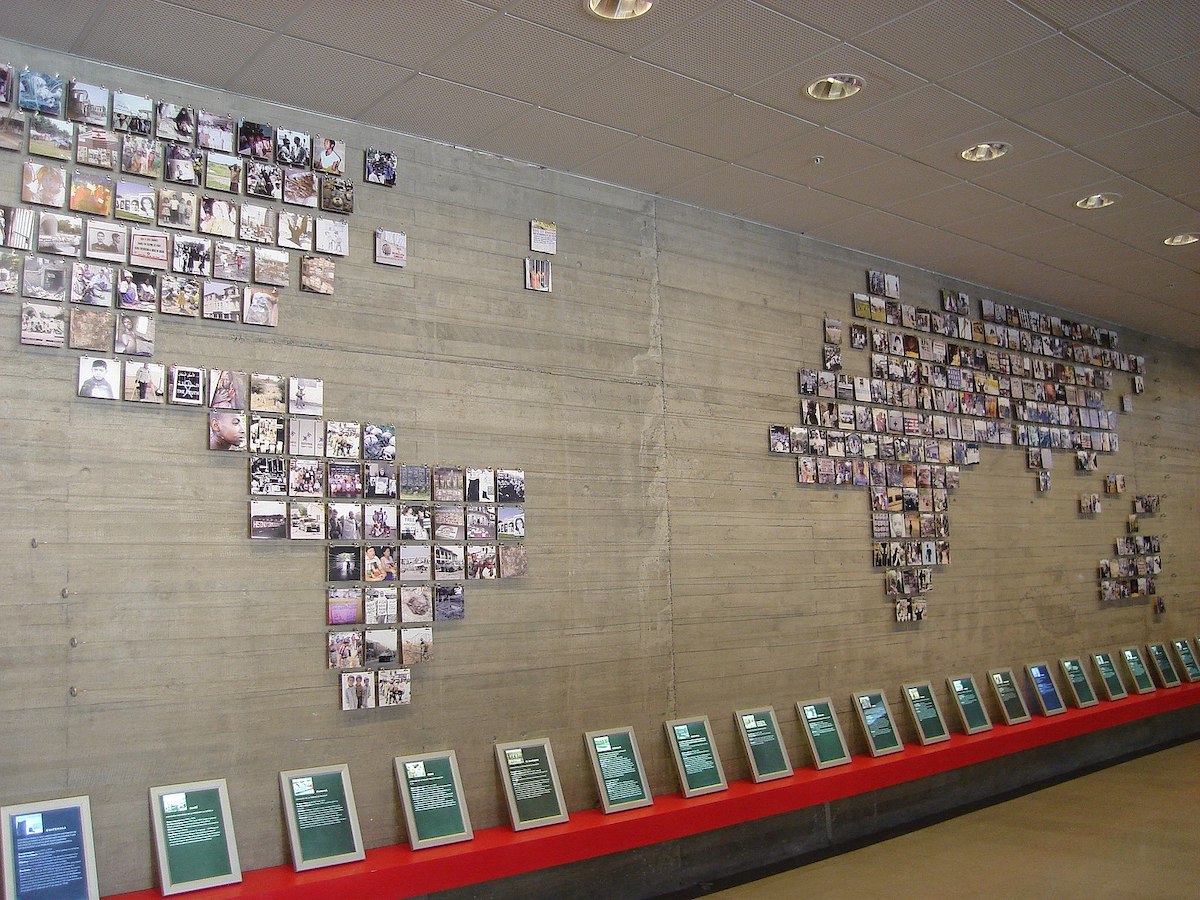
Image via Warko, Wikimedia Commons
Built to honor the victims of human rights violations of the Pinochet regime, the Museum of Memory and Human Rights opened in 2011, and houses exhibitions, events, and seminars, and conducts research around human rights worldwide. During Augusto Pinochet’s dictatorship throughout the 1970s and 1980s, it’s estimated that 30,000 people were tortured or executed, and 200,000 were exiled. The museum’s mission is “to allow dignity for victims and their families, stimulate reflection and debate and to promote respect and tolerance in order that these events never happen again.”
A few things that you will see at the museum include:
- Video footage and documentaries about the rise and fall of the dictatorship
- Testimonies from survivors of torture, as well as some devices used for torture
- Books, letters, photographs, jewelry, clothing, and other belongings from victims
Learn more about the Museum of Memory and Human Rights and plan your visit here.
About the Author
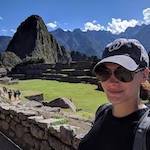 As the editor in chief of Frayed Passport, my goal is to help you build a lifestyle that lets you travel the world whenever you want and however long you want, and not worry about where your next paycheck will come from. I've been to 20+ countries and five continents, lived for years as a full-time digital nomad, and have worked completely remotely since 2015. If you would like to share your story with our community, or partner with Frayed Passport, get in touch with me at sarah@frayedpassport.com!
As the editor in chief of Frayed Passport, my goal is to help you build a lifestyle that lets you travel the world whenever you want and however long you want, and not worry about where your next paycheck will come from. I've been to 20+ countries and five continents, lived for years as a full-time digital nomad, and have worked completely remotely since 2015. If you would like to share your story with our community, or partner with Frayed Passport, get in touch with me at sarah@frayedpassport.com!
Featured image via Unsplash.
Frayed Passport is a participant in the Amazon Associates Program, an affiliate advertising program designed to provide a means for sites to earn advertising fees by advertising and linking to Amazon.com. We also may share links to other affiliates and sponsors in articles across our website. If you have questions or concerns, please contact us.

